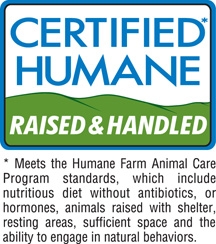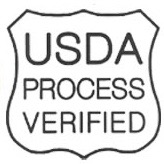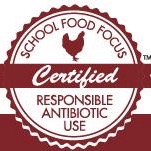What Do Labels Really Mean: Dairy + Eggs
What Labels Really Mean: Dairy and Eggs
Reading a label is the simplest, most effective way to find out what’s in a product – whether it's food, a household cleaning product, or skin and hair care products. The trouble is that some labels carry clout and others hardly at all. Learning what’s behind the label is a key piece in making an informed decision about how sustainable or healthy a product actually is.
Here is a quick-reference guide to common labels found on dairy and eggs including what you might think it means, what it actually means and the standards behind it, who certifies it, along with things to look out for around the label.
 What the label says: CAGE FREE
What the label says: CAGE FREE
Used for: Eggs
You think it means: Chickens are free to roam in grassy fields, and are not cooped up in cages.
It actually means: Chickens are not restrained in cages, but no guarantee that they spent any time in the great outdoors.
Standards: Egg-laying hens cannot be caged – though doesn’t ensure any other humane standards – nor that birds have access to outdoors. “Certified Humane” eggs are subject to higher standards (see below).
Who certifies it: No one really.
Beware of: This is a pretty misleading label – look for other standards attached such as “Certified Humane” and “Certified Organic”
 What the label says: CERTIFIED HUMANE (RAISED & HANDLED)
What the label says: CERTIFIED HUMANE (RAISED & HANDLED)
Used for: eggs, poultry, beef, pork, lamb
You think it means: Animals have a peachy quality of life until they get the axe.
It actually means: Animals used for dairy and meat are treated humanely in a safe, healthy living environment
Standards: “Certified Humane” has strict standards developed by a strong Scientific Advisory Board- including a nutritious diet without antibiotics or hormones, and animals raised with sufficient shelter and sufficient space to engage in natural behaviors from birth through slaughter.
Who certifies it: Verified and enforced by third party inspectors who have expertise in animal care
.jpg) Label: HORMONE-FREE, rBGH FREE or rBST FREE
Label: HORMONE-FREE, rBGH FREE or rBST FREE
Used for: Dairy
You think it means: Au natural dairy cows whom are not pumped full of hormones.
It actually means: Dairy from cows that are not injected with genetically engineered drugs to boost production
Standards: Dairy products from cows that have not been injected with synthetic, genetically modified recombinant Bovine Growth Hormone (known as rBGH, rBST and Prosilac) to artificially stimulate excessive milk production can be labeled as such. Though the FDA approved the hormone in 1993, alleging it was safe, there has since been much evidence to challenge its safety since the ruling. rBGH has been banned in many countries including the entire European Union, Japan, Canada, Australia and New Zealand.
Who certifies it: No one really.
Beware of: FYI: Milk by nature contains hormones.
Dairy products are one of the most important foods to choose organic – the standards by which hormones are not allowed, period.

 Label: ANTIBIOTIC FREE (ABF) PROCESS VERIFIED | CERTIFIED RESPONSIBLE ANTIBIOTIC USE
Label: ANTIBIOTIC FREE (ABF) PROCESS VERIFIED | CERTIFIED RESPONSIBLE ANTIBIOTIC USE
Used for: dairy and eggs - also pork, poultry, and beef
You think it means: Healthy, happy creatures without and IV drip.
It actually means: Antibiotics aren’t administered for preventative measure, only for real illness.
Standards: Antibiotics never given from birth to slaughter. Exceptions are for ill animals. “Certified Responsible Antibiotic Use” (CRAU) ensures that any antibiotics administered are not the same analogues used for humans.
Who certifies it: USDA certifies “Certified Responsible Antibiotic Use” (CRAU) and “USDA Process Verified” for Antibiotic Free labeling.
Beware of: Look for “USDA Process Verified” seal or “ABF” stamp to ensure reliability. The USDA specifically says it does not authorize the use of “antibiotic free”, so be aware it does not have clear or consistent meaning unless qualified by the USDA.
